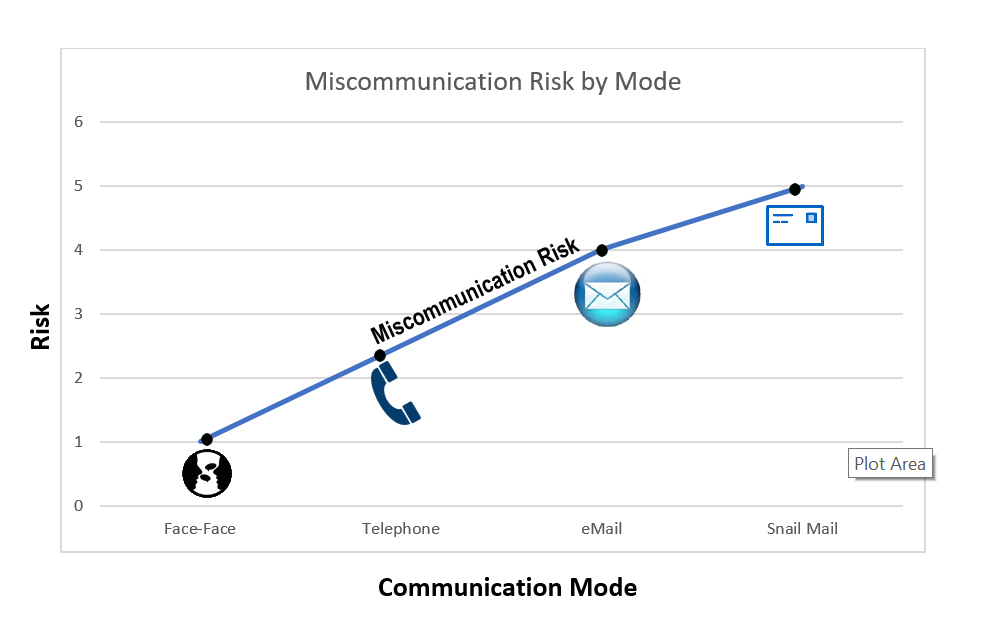
We have seen a steady business communication trend in which people over-rely on email as a means of communicating with one another; and it has cost businesses of all types dearly.
A past post shared data from the Society for Human Resource Management (SHRM) referenced a survey of 400 companies with 100,000 employees each that cited an average loss per company of $62.4 million per year because of inadequate communication to and between employees.
Even smaller businesses of 100 employees suffer the impact of miscommunication, SHRM’s report said, quoting Debra Hamilton’s article “Top Ten Email Blunders that Cost Companies Money,” in which she stated miscommunication cost these smaller businesses an average of $420,000 per year.
The reasons behind the problem are easily explained by the image above – the further removed from our audience we are, the more difficult it becomes to communicate well.
The primary reasons for misconceptions when communicating via email are:
- No visual contact (can’t read body language)
- No audio (can’t interpret voice tone)
- No feedback (can’t interpret reader’s reaction to our message or clarify intended meaning)
A Few Simple Solutions:
The first step toward improving the quality of our communication involves maintaining an awareness of these potential pitfalls, and taking purposeful steps to reduce the risk of miscommunication that is associated with each communication mode.
For example, when using the phone or a remote platform (i.e., Zoom, Teams, etc.) a good rule-of-thumb is to ask more questions – in particular, clarifying questions – to make sure both or all parties are on the same page. Since we won’t be able to interpret body language, we might also do our best to optimize voice tone; we can do this by speaking directly into the mouthpiece or microphone. In addition, if we sit-up straight and lean forward when speaking, our diaphragm will open and our voice will project more strongly.
When corresponding in writing, it’s important to re-read/edit before sending to ensure clarity. We should also pay close attention to punctuation and spelling. Consider the difference in meaning between the following two sentences, which is brought-about by simply omitting a comma:
“Let’s eat, granny!” (children asking their grandmother for a meal)
“Let’s eat granny!” (you can figure this one out…)
Keeping these written messages concise also tends to improve their quality, as it typically requires more thought and re-reading/editing in order to keep things on the shorter side. Recognizing the impact of visual impact is also important. A big block paragraph with little or no white space is not appealing – many won’t read it all! Instead, make strategic use of bullets and shorter paragraphs.
These little “tweaks” can make a big difference in the long-run; and given the costs of miscommunication outlined above, are well worth the effort.